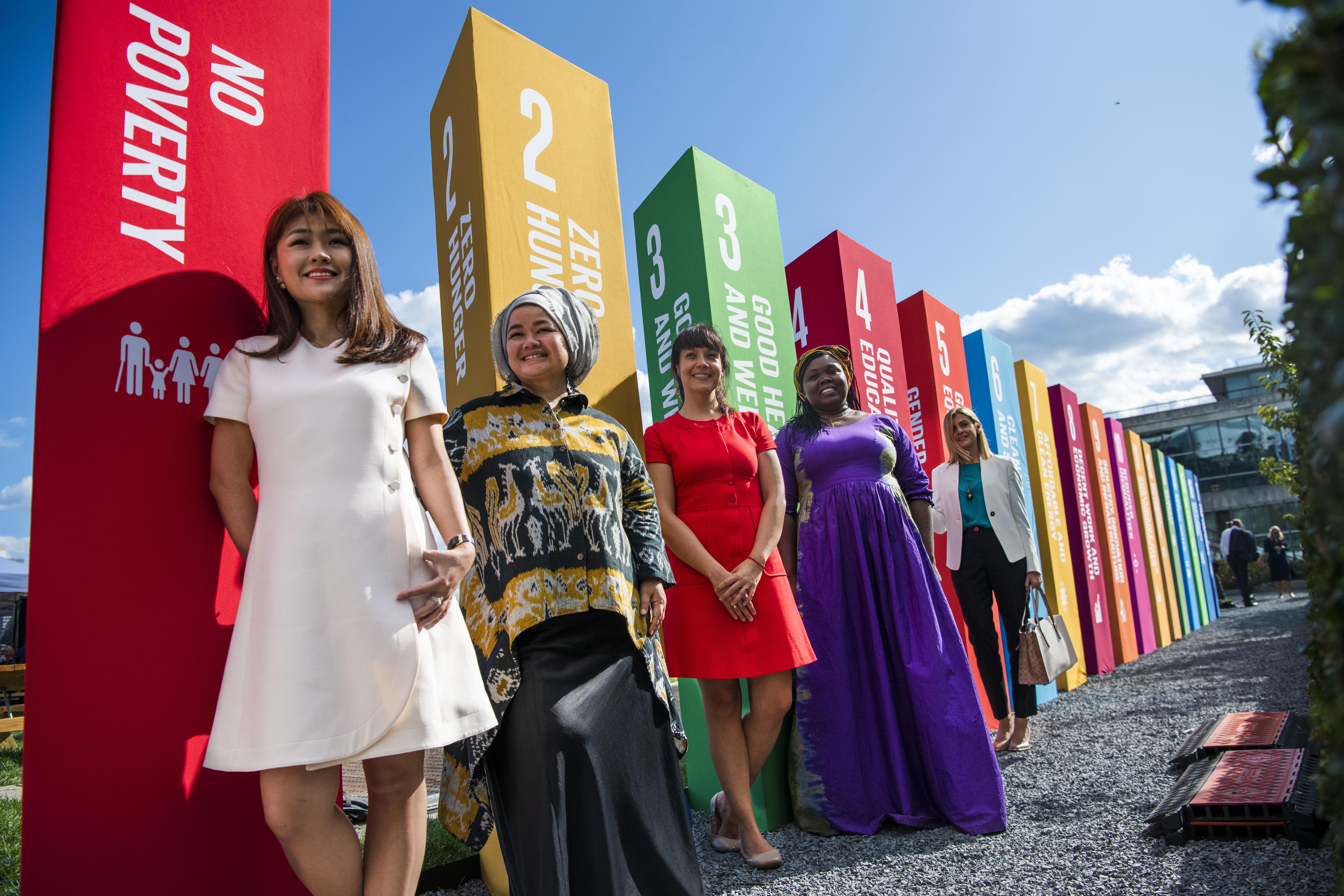
As 44 countries present their progress on the Sustainable Development Goals (SDGs) at the UN’s High-Level Political Forum (HLPF) in New York this week, the gathering is an opportunity to reinforce the importance of producing and using gender data and building the alliances needed for long-lasting change.
The HLPF is specifically reviewing progress towards Goal 17 (on Partnerships), which includes a target on enhancing developing countries’ capacities to produce more high-quality, timely, reliable and disaggregated data. Yet we’re already half-way to the finish line and not one of the 193 countries that committed to Agenda 2030 has all the data needed on gender-specific SDG indicators.
Mainstreaming gender data to is essential to achieve all 17 goals, not just SDG 5 on Gender Equality.
With the HLPF and numerous other events looming this year (Women Deliver, Generation Equality Midpoint Moment, SDG Summit and more), world leaders should consider these four actions to harness the power of gender data to monitor and achieve all the SDGs:
Leave no national statistical system behind
Gender data generated by national statistical systems (NSSs) provide critical insights into the unique challenges faced by women and men, enabling evidence-based policymaking and targeted interventions. Strong National Statistical Offices (NSOs) and data producers in ministries, departments and agencies are essential to a well-oiled gender data value chain. However, these producers do not have equal capacities and resources, as evidenced by the World Bank’s Statistical Performance Indicators. While some countries are introducing artificial intelligence (AI)-based technologies and digital innovations, others are relying on outdated data and paper-based records. Moreover, many NSOs lack the technical and financial resources to regularly produce and use gender data.
To leave no one behind in the pursuit of the SDGs, we need to strengthen NSSs, particularly in low-income countries. With technical assistance, training and adequate funding, high-quality gender data can be produced and used for policies to advance gender equality, both nationally and globally. Without the expertise and commitment of both data producers and skilled data users, the task of effectively measuring, analysing and addressing gender disparities will be significantly hampered, impeding the realization of a more gender-equitable and inclusive world.
Promote openness and use of gender data
Open gender data are critical for exposing biases, offering insights into methodologies, removing data access barriers, allowing for evidence-based decision-making, increasing the quality and relevance of data, and creating a culture of accountability. Without open and accessible gender data, governments cannot be held accountable, development challenges are harder to uncover, and policymakers are left hamstrung in their efforts to implement impactful policies. Unfortunately, the openness and coverage of official gender data around the world continues to be a barrier to using data for evidenced-based policy making. Open Data Watch’s newly launched Gender Data Compass aims to correct course by providing guidance for countries to overcome challenges and implement solutions to harness the power of open gender data.
Fortunately, various solutions exist. For example, through its Women Count programme, UN Women has been working to ensure that gender data are accessible and used to inform timely policies and programmes, including to address violence against women in Albania, Colombia, Georgia, Morocco and Uganda, women’s unpaid care and domestic work in Bangladesh, Kenya and Senegal, gender and the environment in Asia and the Pacific, and the impacts of COVID-19 in over 12 countries.
Integrate gender data in plans and strategies
Since 2017, with support from UN Women and PARIS21, 25 countries have integrated gender data as a strategic priority in their national gender equality policies, national development strategies and/or national statistical development strategies, such as in Bangladesh, Cameroon, Colombia, Jordan, Kenya, Kyrgyzstan, Morocco, Nepal, Tanzania and Uganda. A recent W20 communique also highlights the need for gender data as part of the G20’s gender equality efforts.
To boost these efforts, the upcoming Gender Data Outlook report by UN Women and PARIS21, which looks at countries’ capacities to plan, produce and use gender data, will provide key data, evidence and recommendations for countries to integrate gender data within and across their plans.
Boost gender data financing
Data2X and Open Data Watch estimate that USD 500 million is needed from donors annually from now until 2030 to adequately fund core gender data systems. But funding has been elusive. While official development assistance for gender equalityhas increased every year since 2015, aid for gender data and statistics has fallen by 55% compared to the average from 2017–2019 – three times higher than the drop in funding for data and statistics overall. The result? Essential gender data on issues like violence against women, climate change or unpaid care and domestic work remain chronically underfunded or unavailable.
Governments, development partners and private sector stakeholders need to prioritize investing in gender data collection, analysis and dissemination. The Clearinghouse’s Gender Data Channel and UN Women, Data2X, Open Data Watch and PARIS21’s Solutions in Scarcity initiative offers pathways to close the financing gap and ensure the continuous availability of resources for gender data initiatives.
The time to act is now
As the global spotlight shines on world leaders, it highlights the urgent need for strong partnerships. UN Women and Open Data Watch together call on leaders to forge fresh commitments to boost the production and use of gender data. Dedicated financing is critical to address data gaps and ensure equitable progress. Now, as the United Nations undergoes its transformative UN 2.0 journey, gender data must occupy a central position, driving decision-making and guiding policies. We urge Member States to champion gender data at the upcoming SDG Summit, fostering collaboration and partnerships to realize our shared goals.


